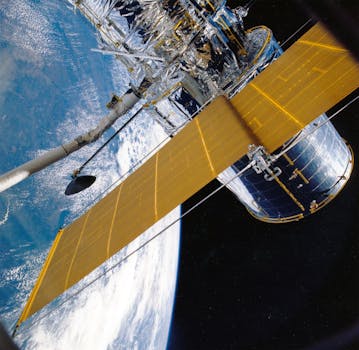
GEO Satellites: Understanding the Technology and Applications
GEO satellites, or Geostationary Earth Orbit satellites, are a type of satellite that orbits the Earth at an altitude of approximately 36,000 kilometers. They are stationed above a specific point on the equator, allowing them to remain stationary relative to the Earth’s surface. This unique characteristic makes GEO satellites ideal for a wide range of applications, including telecommunications, weather forecasting, and navigation.
How GEO Satellites Work
GEO satellites work by using a combination of solar panels and batteries to generate power, which is then used to transmit and receive signals. The signals are transmitted through a large antenna, which is pointed towards the Earth’s surface. The signals are then received by ground stations or other satellites, and are used to provide a variety of services, including television broadcasting, internet connectivity, and mobile phone networks.
Applications of GEO Satellites
GEO satellites have a wide range of applications, including telecommunications, weather forecasting, and navigation. They are used to provide global coverage, enabling people in remote or underserved areas to access essential services such as healthcare, education, and financial services. GEO satellites are also used to support disaster relief efforts, providing critical communications infrastructure in the aftermath of a disaster.
Benefits and Challenges of GEO Satellites
The use of GEO satellites has several benefits, including global coverage, high bandwidth, and reliability. However, there are also several challenges associated with the use of GEO satellites, including the high cost of launch and maintenance, and the risk of satellite failure or interference. Additionally, the increasing number of satellites in orbit is raising concerns about space debris and the potential for collisions.
Future of GEO Satellites
The future of GEO satellites is likely to be shaped by advances in technology, including the development of more efficient and cost-effective launch systems, and the introduction of new services such as high-throughput satellites and satellite-based internet services. Additionally, there is a growing trend towards the use of smaller, more agile satellites, which are cheaper and more flexible than traditional GEO satellites.



